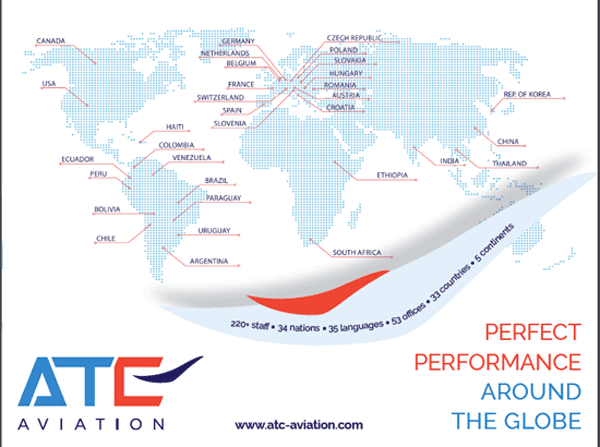
 |
 |
 #INTHEAIREVERYWHERE |
| Vol. 23 No. 25 | Tuesday May 28 2024 |
| |
 |
We Like Mike!
|
 |
International Air Transport Association (IATA)'s big cargo meeting in March set attendance records not seen at that organization since its founding in 1945. With all the excitement of the WCS fading into the rearview mirror it seems timely to provide an update from Hong Kong from our friend and colleague Bob Rogers who also happens to be the top shaker and mover at ULD CARE. At the top of the pile, came an announcement a few weeks ago that once again Hong Kong International Airport has retained its status as the number one cargo airport worldwide. This is no small feat as there are plenty of airports nipping at its heels, but Hong Kong's unique geographical location and its proximity to the manufacturing powerhouse of the Pearl River Delta, now folded into the Greater Bay Area project supercharges Hong Kong's position. And over on the passenger side it is almost impossible to reconcile what one experiences today coming through the terminals compared to even just 18 months ago when Hong Kong was still in Covid travel restrictions. Cathay Pacific continues rebuilding their operations and expects to reach 100% of pre-Covid levels very early next year, but in the meantime pretty well every destination they covered before 2019 gets at least some service, if not quite the original frequency. Moving away from the airport, it's wonderful to feel that Hong Kong energy now is full steam ahead, powered by business travellers and tourists alike, along with cruise ships, conventions and events, and as these visitors come to Hong Kong and experience something that is very different from the picture presented in the western media over the last few years, the message is spreading far and wide. An example of such an attraction (pictured here) is a lavish drone show that was put up just a couple of weeks ago to mark the Buddha’s Birthday Holiday. Just for fun . . . THE PEKING TO PARIS RALLY ASSOCIATION LIMITED Peking to Paris Classic Car Rally began May 18 in Beijing at (where else?) The Great Wall of China! Not only a spectacular event, but breathtaking surroundings and on a perfect blue sky morning as they set off. How anybody can imagine driving a modern car on the highways from Peking to Paris is beyond me, and these guys were all driving antique cars and often on minor or no roads at all conditions and against the clock! Bob Rogers was there as was a friend from Mongolia, Helge of Nomads Tours & Expedition, who has run support for this event in the past when it used to pass through Mongolia. Helge, always a super trooper was back for 2024, running support for this edition Peking to Paris up to the Caspian Sea. Bob put a series of photos in a 5-minute Vimeo. |
 |
Indian Exporters— especially those
in readymade garments – were looking forward to this summer. But,
like the rising summer heat, the air cargo market has seen a steady rise.
The India-Europe air cargo rates, according to freight forwarders, are
“going through the roof”. |
|
|
The Indian government’s ambitious drive to boost air cargo to 10 million metric tonnes by 2030 looks good on paper. But will it be possible to achieve that goal without widebody freighters? That is the question that is being asked by air cargo stakeholders. A quick look at prevailing figures points out that exports from India have seen strong growth: there was a 21 percent growth year-on-year, according to figures for the first eleven months of fiscal year 2023-24 (April to February). Domestic cargo—belly cargo in passenger aircraft as well as freighters—grew to 6,98,000 metric tonnes at the same time. Domestic cargo constitutes 40 percent while exports make up 60 percent of the total throughput. Of this, the largest chunk of export shipments was transported by foreign air operators. That is around 94-95 percent of the export cargo. The remaining 5-6 percent is being handled by widebodies of Air India and Vistara. By 2027, low-cost Indian carrier IndiGo would start widebody services: it has recently signed a firm deal for 30 A350-900 jets, with purchase rights for an additional 70 “for possible future needs under certain conditions”. Both Boeing and Airbus have forecast India's growth in air cargo, largely due to manufacturing and e-commerce. Boeing, for example, has said that India would need more than 80 freighters in the next 20 years. Airbus, with its eye at the future, has tied up with Hindustan Aeronautics Limited (HAL, Indian public sector aerospace and defence company, headquartered in Bangalore) to support aircraft maintenance, repair, and overhaul (MRO) services for the country's burgeoning commercial fleet. In the prevailing condition, it will be a difficult task to reach the 10 million metric tonnes mark by 2030 and transporting the 10-mn tonne air cargo as belly cargo cannot even be imagined. What India lacks are widebody freighters that can fly long distances. Experts have pointed out that this is opportune moment for potential air cargo operators to start freighter aircraft and P2F (passenger-to-freight) operations. Placed against freight carriers like FedEx, DHL or UPS, India has only a handful of freighters: 14 to be exact and all of them are narrowbodies that cannot reach destinations in Europe or the United States. The major obstacle for potential domestic freighter operators is the lack of a level playing field. The huge custom dues that have to be paid for leased aircraft registered in India put operators off. Additionally, civil aviation regulations prevent India’s cargo airlines from operating planes that are more than 20 years old even as foreign carriers fly into India with much older planes. The government is well aware of the demand from air cargo stakeholders for the creation of dedicated cargo airports. The government is also keen to bring a transshipment policy to make India an international hub for air cargo transport. This would go a long way to achieve the ambitious target by 2030. However, a word of caution. This is election year and by June 4, India will know who will take over the governance of this huge country. If there is a change in the government, air cargo stakeholders might have to wait longer for any sort of development to take place. Tirthankar Ghosh |
|
 |
If
You Missed Any Of The Previous 3 Issues Of FlyingTypers Access complete issue by clicking on issue icon or Access specific articles by clicking on article title |
||
 Vol. 23 No. 22 ICAO Cargo Workshop Chuckles for May 6, 2024 LAACA Proud Bird Moves Its Tail Remembering Bruce McCaffrey |
 Vol. 23 No. 23 ICAO Cargo Action Peru Bob Arens Is Fondly Remembered |
|
Publisher-Geoffrey Arend • Managing
Editor-Flossie Arend • Editor Emeritus-Richard Malkin |
Send comments and news to geoffrey@aircargonews.com
|